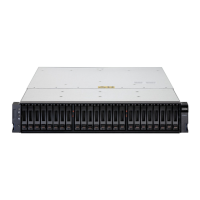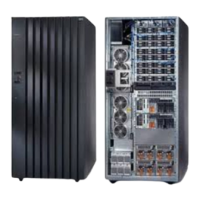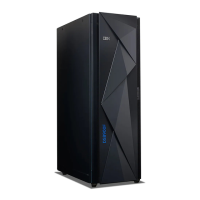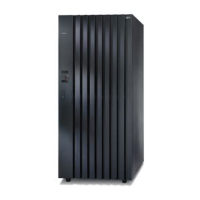Chapter 17. iSCSI configuration 2 - Software Initiator on Red Hat Linux 395
Draft Document for Review August 30, 2007 12:59 am 7065iSCSI_Config2.fm
Enterprise Linux 4. We show these steps using the CLI - however the same setup can be also
done with the GUI.
1. A command script file, called hooghly.cmd, shown in Example 17-13, contains the
commands to create logical drives in existing arrays and setup logical drive mapping. For
formatting reasons in this book, we use backslashes to show line breaks; however you
should remove these line break characters - every line is a single command.
Example 17-13 hooghly.cmd command file
show "Create a host group with the name Asia";
create hostGroup userLabel="Asia";
show "Create a host Hooghly that is member of host group Asia";
create host userLabel="Hooghly" hostGroup="Asia";
show "Create an iSCSI host port alias initiator";
create iscsiInitiator iscsiName="iqn.1987-05.com.cisco:01.5913f144a0d9"
userLabel="Hooghly-Initiator" host="Hooghly";
show "Create a logical drive in an existing array and do not map that logical
drive";
create logicaldrive array=1 userLabel="Hooghly-1" freeCapacityArea=1 capacity=5
GB \ mapping=none;
create logicaldrive array=2 userLabel="Hooghly-2" freeCapacityArea=1 capacity=7
GB \ mapping=none;
show "Map logical drives to an host";
set logicalDrive ["Hooghly-1"] logicalUnitNumber=0 host="Hooghly";
set logicalDrive ["Hooghly-2"] logicalUnitNumber=1 host="Hooghly";
2. The script file is executed by SMcli using the syntax shown in Example 17-14. The output
is directed to a file called hooghly.out - check it for errors. It will contain the comments
specified with the show command, to help debug any errors.
Example 17-14 SMcli executes the script
amazon:~ # SMcli -n DS3300 -f hooghly.cmd -o hooghly.out -S
amazon:~ #
Now the logical drives and host mapping configuration is done. We will later define security for
access once the basic connection is working.
17.5.1 Finish the configuration
To load the iSCSI driver during reboot it is necessary to modify the service database. Run the
command chkconfig iscsi on to enable the load of the iSCSI driver during system start, as
shown in Example 17-15.
Example 17-15 Enable iSCSI during system start
[root@hooghly ~]# chkconfig iscsi on
[root@hooghly ~]#
Reboot the server to activate the MPP driver and get access to the logical drives configured
on the DS3300.
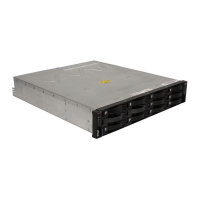
